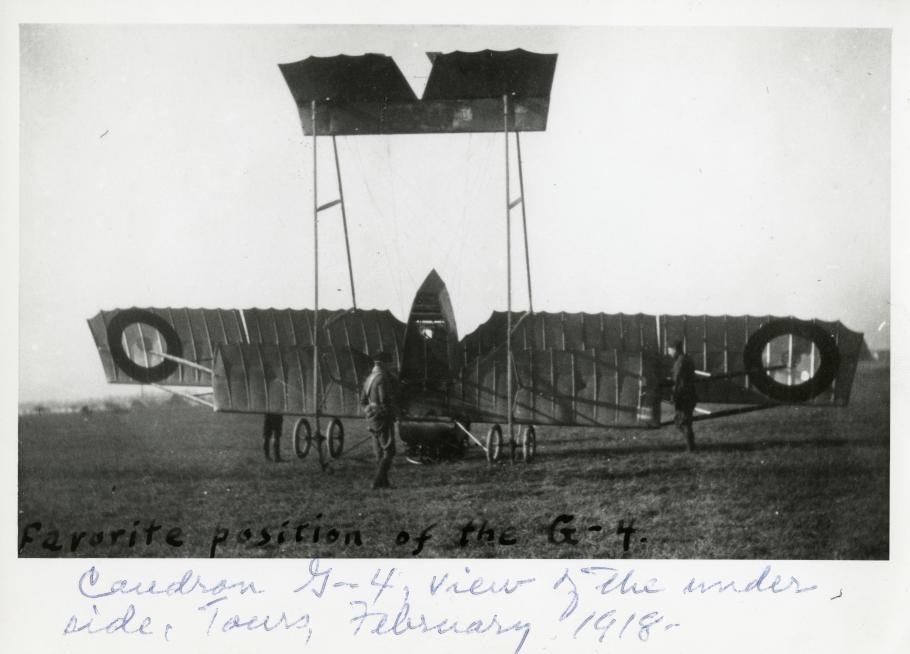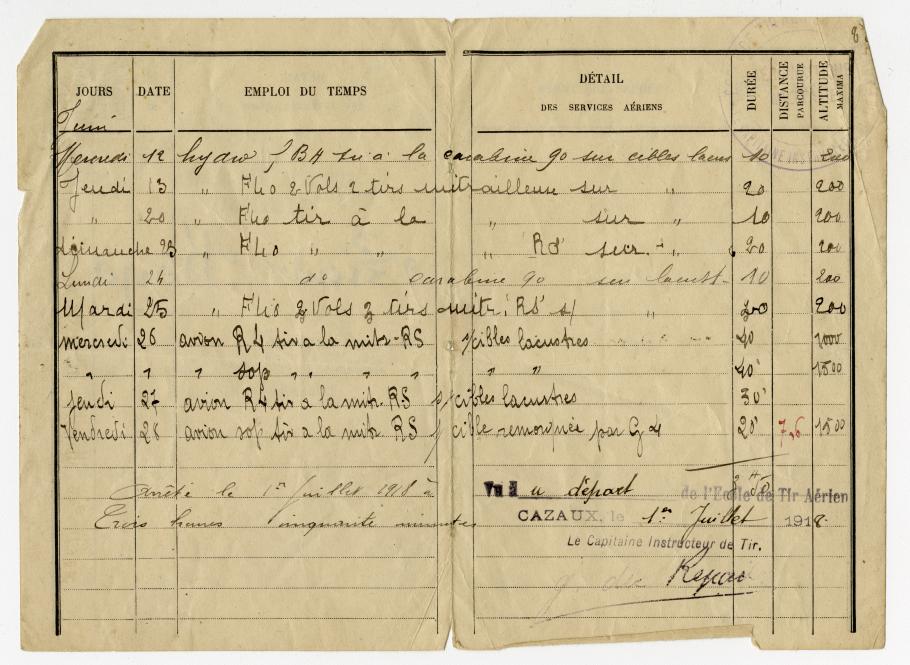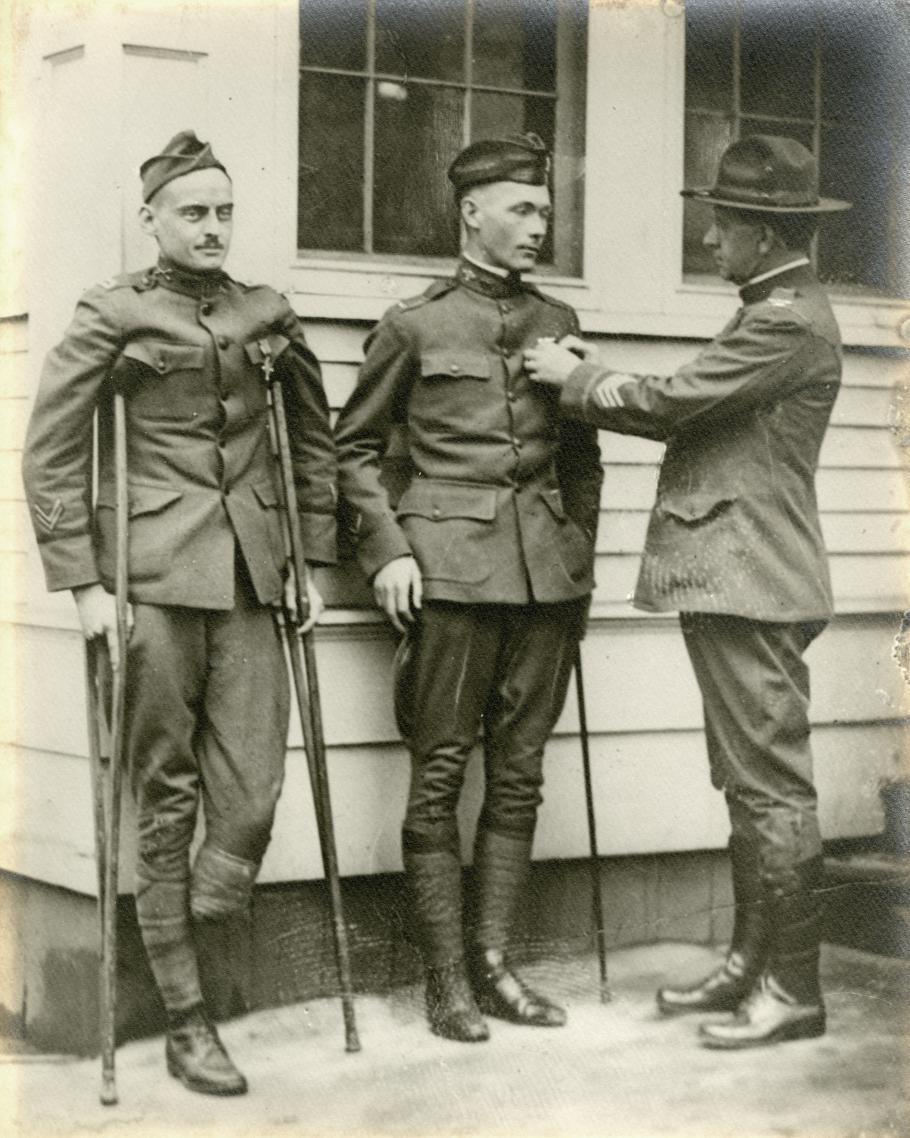Theodore E. Boyd was a 24-year-old teacher from Tennessee when the United States entered World War I in 1917. Boyd initially volunteered for Reserve Officers Training School at Fort Oglethorpe, Georgia. He then accepted a commission to be a Second Lieutenant in the Field Artillery Section. In France, Boyd served with the 88th Aero Squadron (Attached), 7th Field Artillery, Air Service, American Expeditionary Forces (AEF). In 2012, the National Air and Space Museum Archives received the Theodore E. Boyd World War I Collection (Acc. No. 2013-0016), and through the documents in the collection—correspondence, photographs, military orders, flight logs, and memoirs—we can reconstruct Boyd’s World War I experience. Boyd volunteered to serve as an officer in the reserves because he was hoping the rank would serve him well in a planned career in law when the war was over. The transition to military life was difficult for many civilians and Boyd showed a sense of humor about training camp in a May 1917 letter:
Great is militarism! For it maketh the once slovenly and inefficient ex-pedagog laboriously scrub and polish his rifle two hours, only to be told on inspection that there is rust in the muzzle, dust in the screw-heads, and that the cause thereof is damned laziness.
He signed the letter, “Militaristically, Theo,” with a postscript, “Don’t take my cussing out too seriously. Half the company had to clean the rifles over again, and my lecture was a mild one comparatively speaking.”
Military identification card for Theodore E. Boyd as a second lieutenant in the 7th Field Artillery regiment, serving as a military observer during World War I. In 2012, the Museum Archives received the Theodore E. Boyd World War I Collection (Acc. No. 2013-0016) and through the documents in the collection—correspondence, photographs, military orders, flight logs, and memoirs—we can reconstruct Boyd’s World War I experience.
Upon arriving in France in fall 1917, Boyd was trained as a military observer. In this role, he would accompany a pilot in a flight over enemy lines, identify targets, and send the position information to the artillery via a wireless transmitter.
An image captioned by Second Lt. Theodore E. Boyd. This aircraft, nosed over upon landing at Tours, France, in February 1918 is actually a Caudron G.3. In 2012, the Museum Archives received the Theodore E. Boyd World War I Collection (Acc. No. 2013-0016) and through the documents in the collection—correspondence, photographs, military orders, flight logs, and memoirs—we can reconstruct Boyd’s World War I experience.
Boyd was required to take many training courses in France, including artillery school, observers’ school, and machine gun instruction.
Page from the flight log (carnet de vols) for Second Lt. Theodore E. Boyd from the École de Tir Aerien de Cazaux (a French aerial gunning school) from June-July 1918. In 2012, the Museum Archives received the Theodore E. Boyd World War I Collection (Acc. No. 2013-0016) and through the documents in the collection—correspondence, photographs, military orders, flight logs, and memoirs—we can reconstruct Boyd’s World War I experience.
On September 14, 1918, Boyd was charged with protecting an aerial photo mission over Conflans, France. According to a citation from his friend and pilot that day, Kenneth P. Littauer:
…He engaged in combat with five enemy pursuit machines of the Pfalz type. He was wounded in both legs, the left foot and right elbow by explosive bullets. In spite of his wounds he succeeded, by a remarkable display of courage and tenacity in keeping up the fire of his guns until the attacking planes were put to flight. During the return to the Allied lines, Lieut. Boyd, although faint with pain and loss of blood, assisted his pilot, whose machine was disabled and coming down under control, in choosing the shortest route to safety.
For his actions, Boyd was awarded the Distinguished Service Cross. He was also awarded the Silver Star for earlier gallantry in action. He spent the rest of the war convalescing in a military hospital and on the last day of the war had been ordered report for return transport to the United States. He continued his correspondence with Littauer after the war. (Interesting side note: Littauer would go on to be an editor at Collier’s magazine and literary agent for author Kurt Vonnegut.)
Second Lt. Theodore E. Boyd receives the Distinguished Service Cross. In the photo, he uses a cane due to injuries sustained during WWI. In 2012, the Museum Archives received the Theodore E. Boyd World War I Collection (Acc. No. 2013-0016) and through the documents in the collection—correspondence, photographs, military orders, flight logs, and memoirs—we can reconstruct Boyd’s World War I experience.
After the war, instead of becoming a lawyer, Boyd went to medical school and taught physiology for 24 years at Loyola University in Chicago. In 1947, he joined the National Foundation for Infantile Paralysis where for 20 years he served as assistant director, and then director, of the Research Department. During the 1970s and 1980s, Boyd wrote dozens of letters to his children and grandchildren recalling his service in World War I with well-crafted tales of training and flying at the front in France. Theodore E. Boyd died in 1986 at the age of 92.



